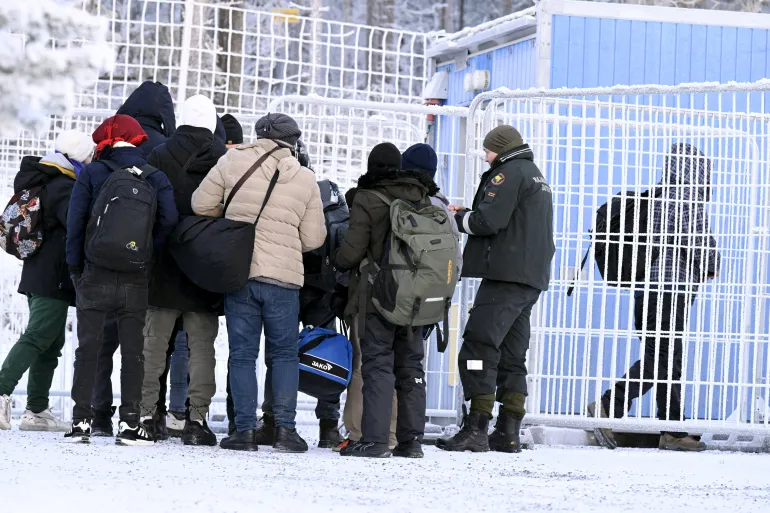On Friday, Prime Minister Petteri Orpo of Finland declared that the sole open border crossing among the country’s eight stations would be situated at its northernmost point, Raja-Jooseppi.
Following days of heightened tensions, the Finnish Border Guard reported that more than 800 migrants, hailing from countries such as Afghanistan, Somalia, Syria, and Yemen, entered Finland through Russia in the past few weeks. In response to this significant influx of migrants, the decision was made to temporarily close the borders.
Furthermore, he emphasized that Russia should cease the practice of sending asylum seekers across its border into Finland, characterizing it as a form of “hybrid attack.”
Continuing his remarks, he asserted that Moscow is directing these asylum seekers to the border as a reprisal for Finland’s choice to enhance defense collaboration with the United States. However, Moscow refutes these allegations. Finland drew the ire of Russia earlier this year by aligning itself with NATO in response to the conflict in Ukraine, thus concluding decades of military non-alignment.
“Question of hybrid attack and national security”
During the press conference, the Finnish prime minister conveyed that the decision to close the border stations serves as a clear message to Russia: “This must stop.” He emphasized that the issue is currently not about asylum seekers; rather, it pertains to a hybrid attack and national security.
Earlier, four border stations were closed by the authorities, and overnight, Finland shut three additional stations for a month, leaving only its northernmost station, Raja-Jooseppi, operational in the Arctic region. However, officials indicated that this station could also be closed.
The Interior Minister, Mari Rantanen, stated in a release, “If necessary, closing the entire border is possible.” Additionally, the government, during an extraordinary session on Friday, resolved that individuals arriving from Russia without the necessary travel documents must be accommodated in supervised centers until their identities are verified.
Furthermore, the Finnish government has requested assistance from the European Union border agency, Frontex. The EU has confirmed its commitment to dispatching a dozen officers with equipment to reinforce the Finnish border.
Despite these developments, the Kremlin has refuted the accusations, with the foreign minister contending that Helsinki should have pursued “a mutually acceptable solution or sought an explanation” instead.
Moreover, Estonia leveled comparable accusations against Russia last Wednesday, citing reported attempts to enter Estonia from Russia through the Narva crossing point, as conveyed by the Estonian public broadcaster ERR.
“Unfortunately, there are many signs that Russian border officials and possibly other agencies are involved,” the interior minister of Estonia, Lauri Läänemets, told Reuters. “Quite frankly, the ongoing migration pressure on Europe’s eastern border is a hybrid attack operation,” he added.
“Hybrid Attack Operation”
For an extended period, Western nations have accused Russia and its allies of leveraging migrants, who seek safety and economic opportunities in Europe, as a tool to undermine Western democracies. This tactic, often termed “hybrid warfare,” involves instrumentalizing migrants and using them in conjunction with disinformation, essentially weaponizing the movement of migrants.
While international conflicts persist relatively unchanged, the methods of warfare have evolved. In 2005, U.S. military officials discussed the “Rise of Hybrid Wars,” highlighting the intricate interplay of both conventional and unconventional strategies. Yet the concept remains largely contested as there is no universal definition of it.

